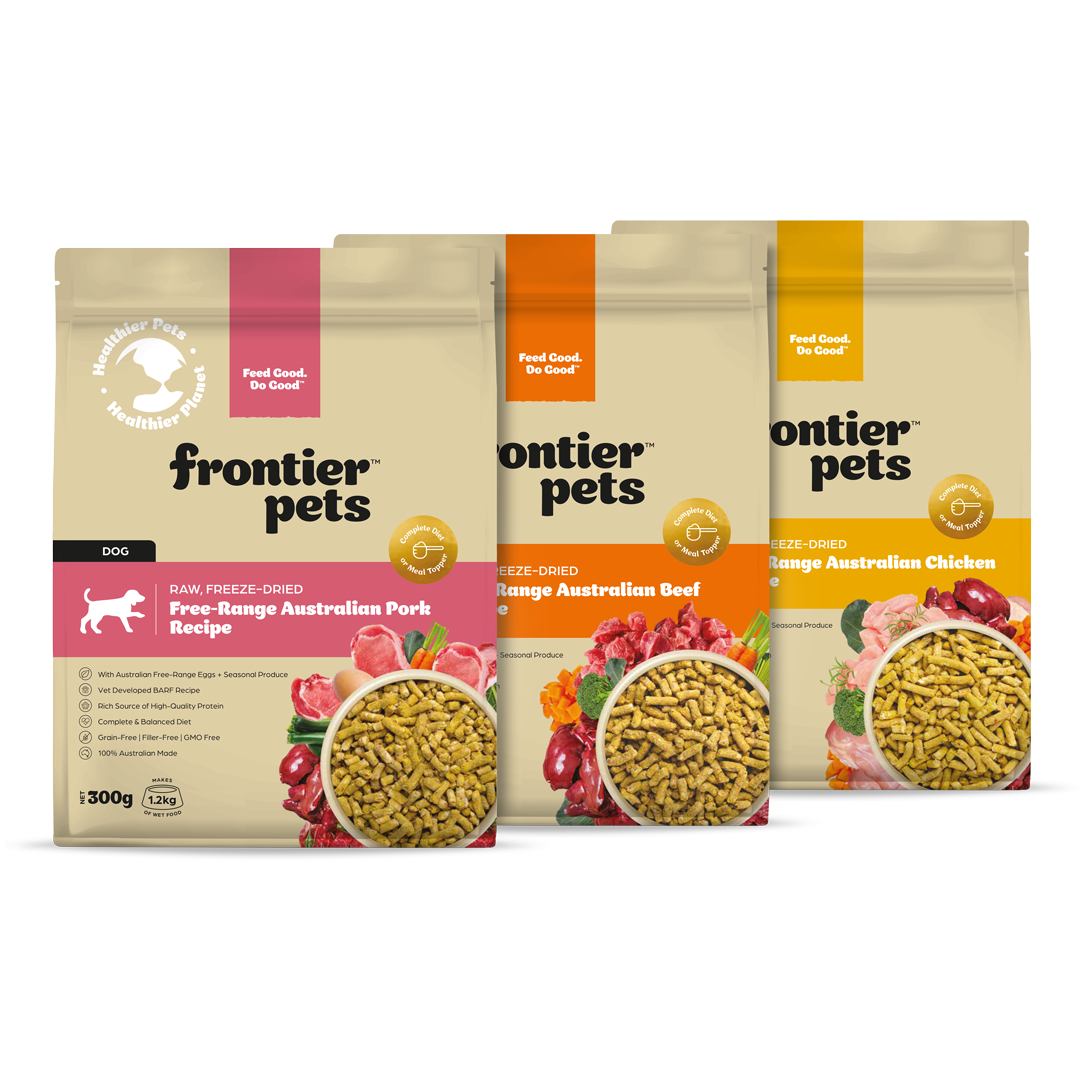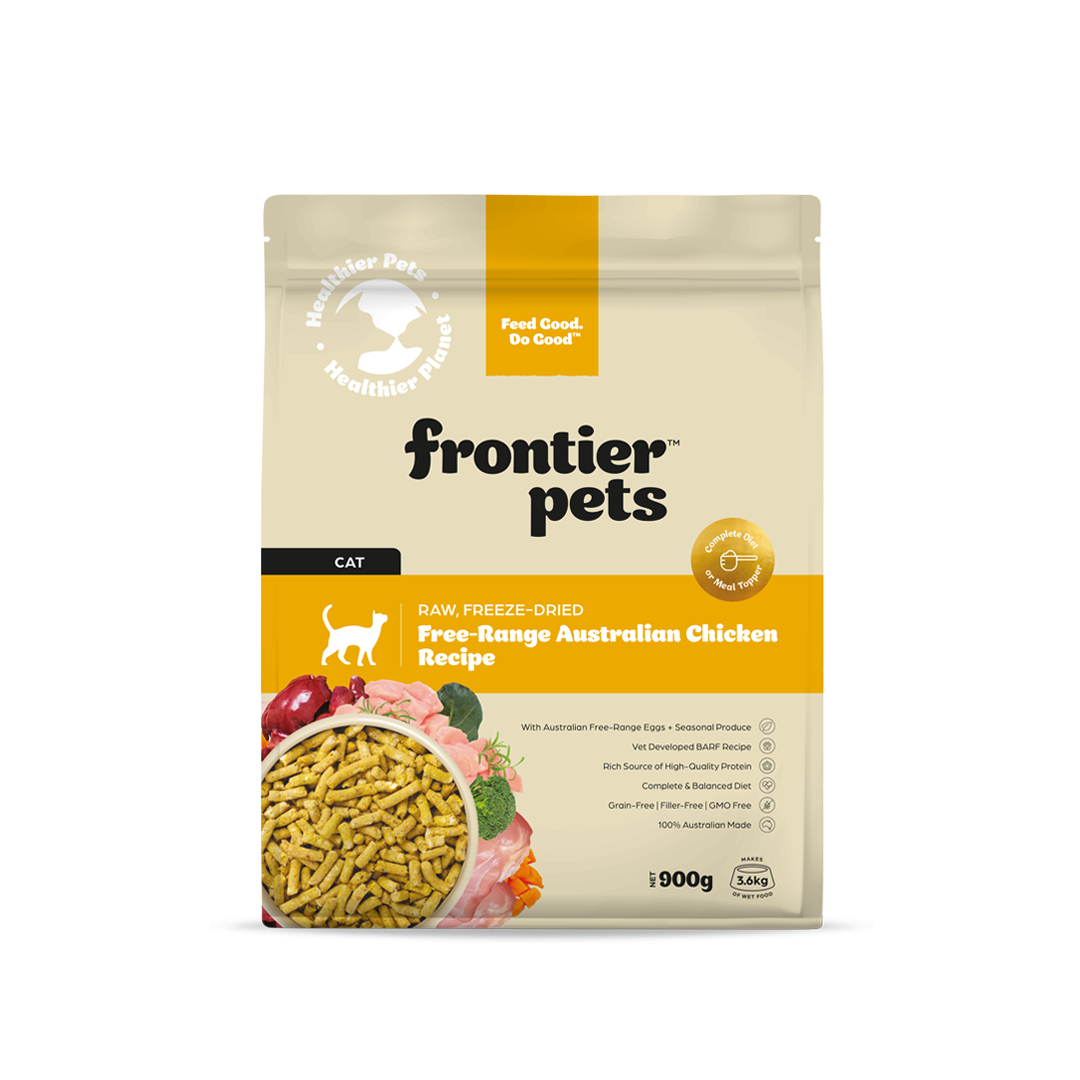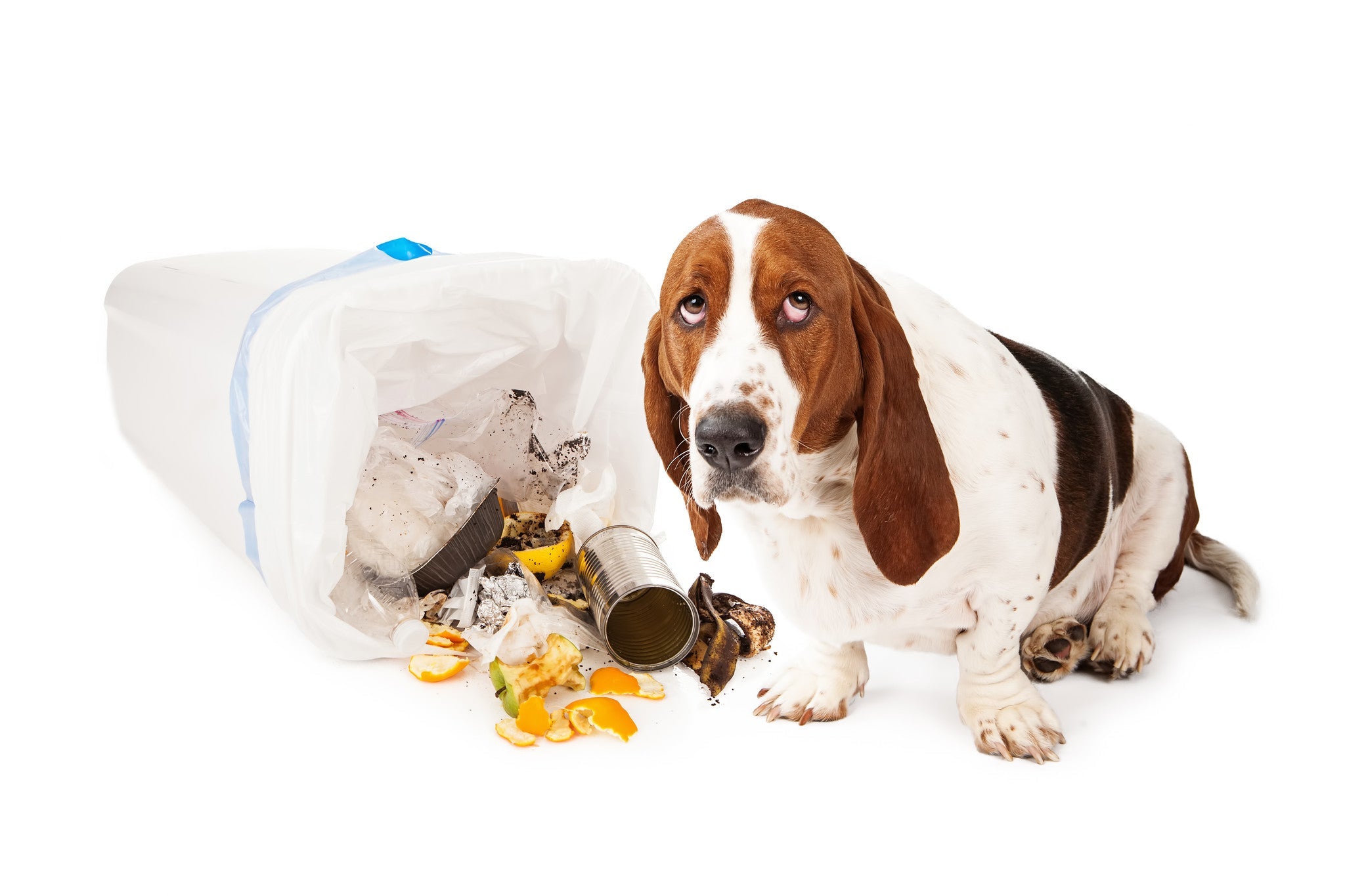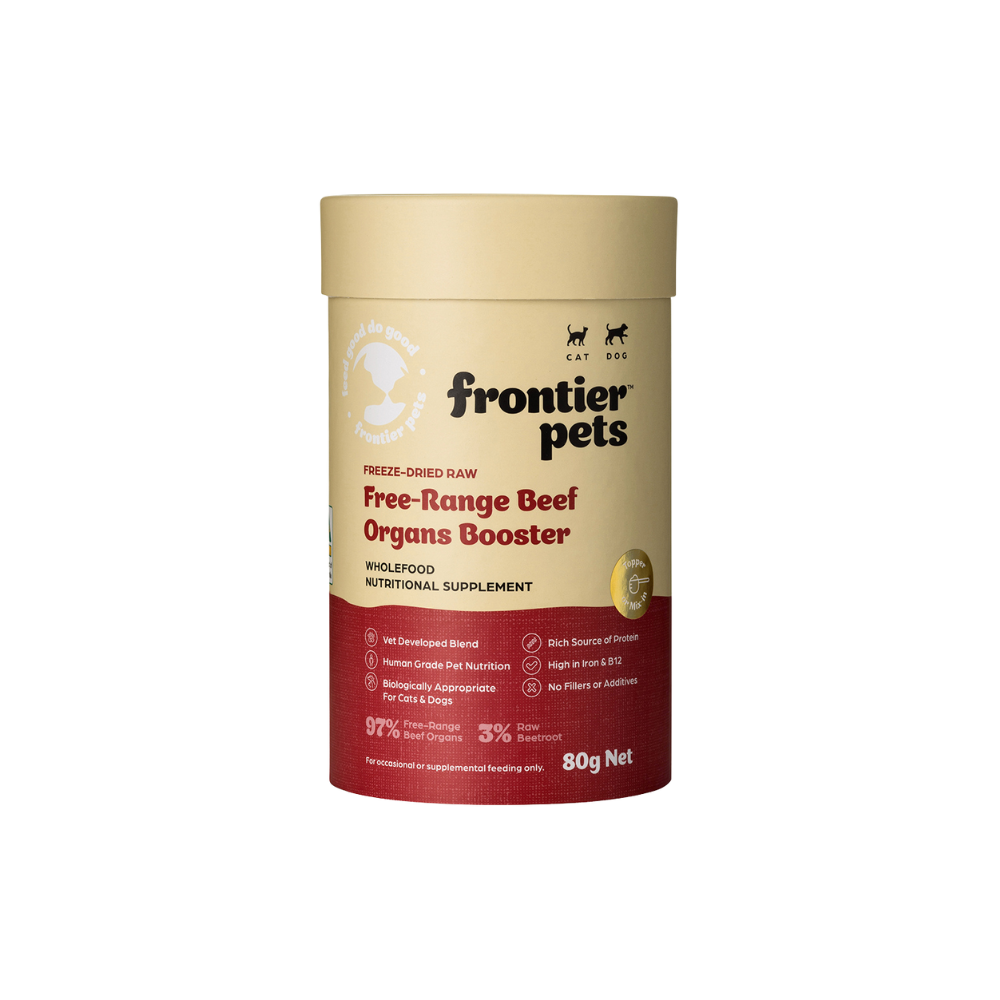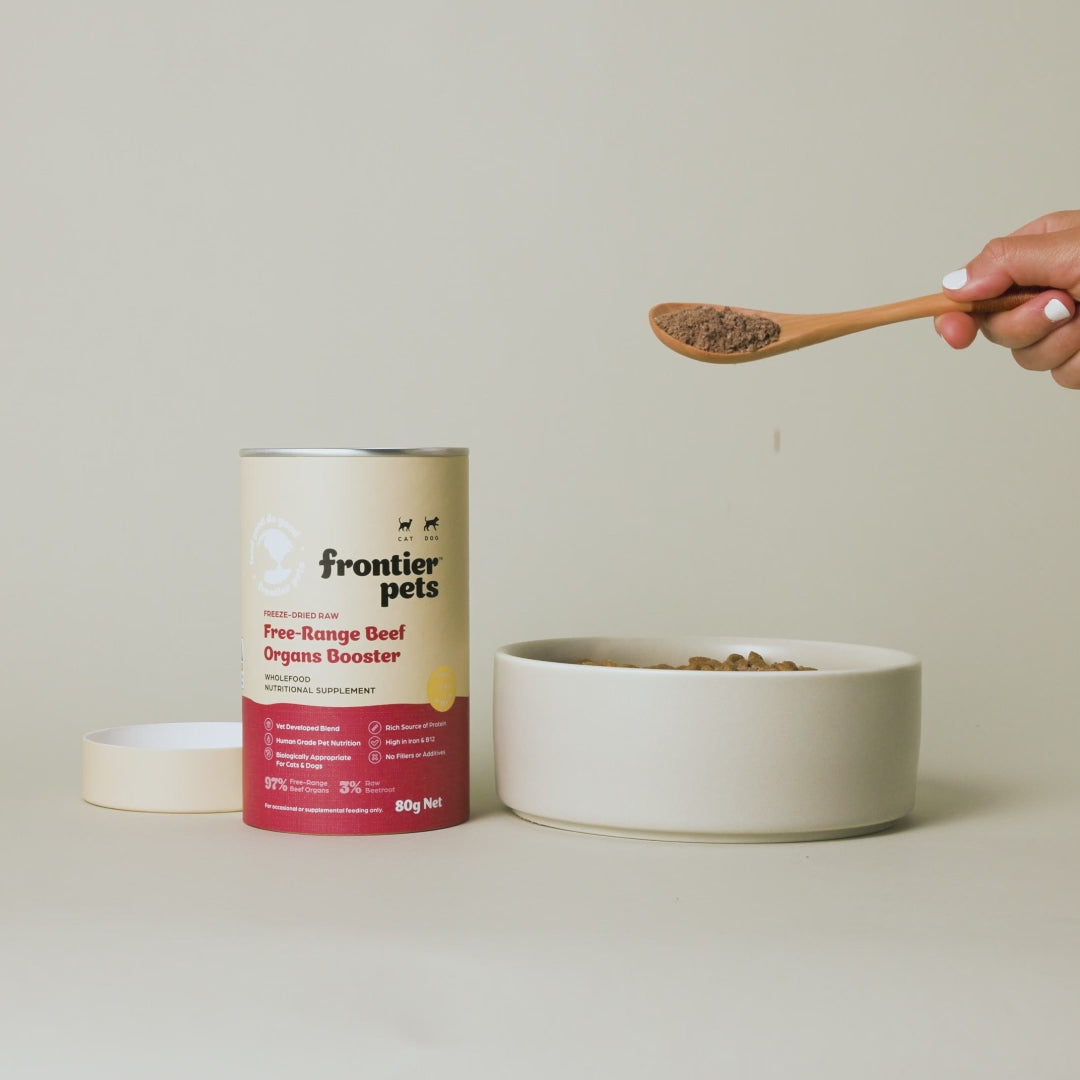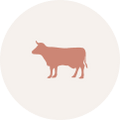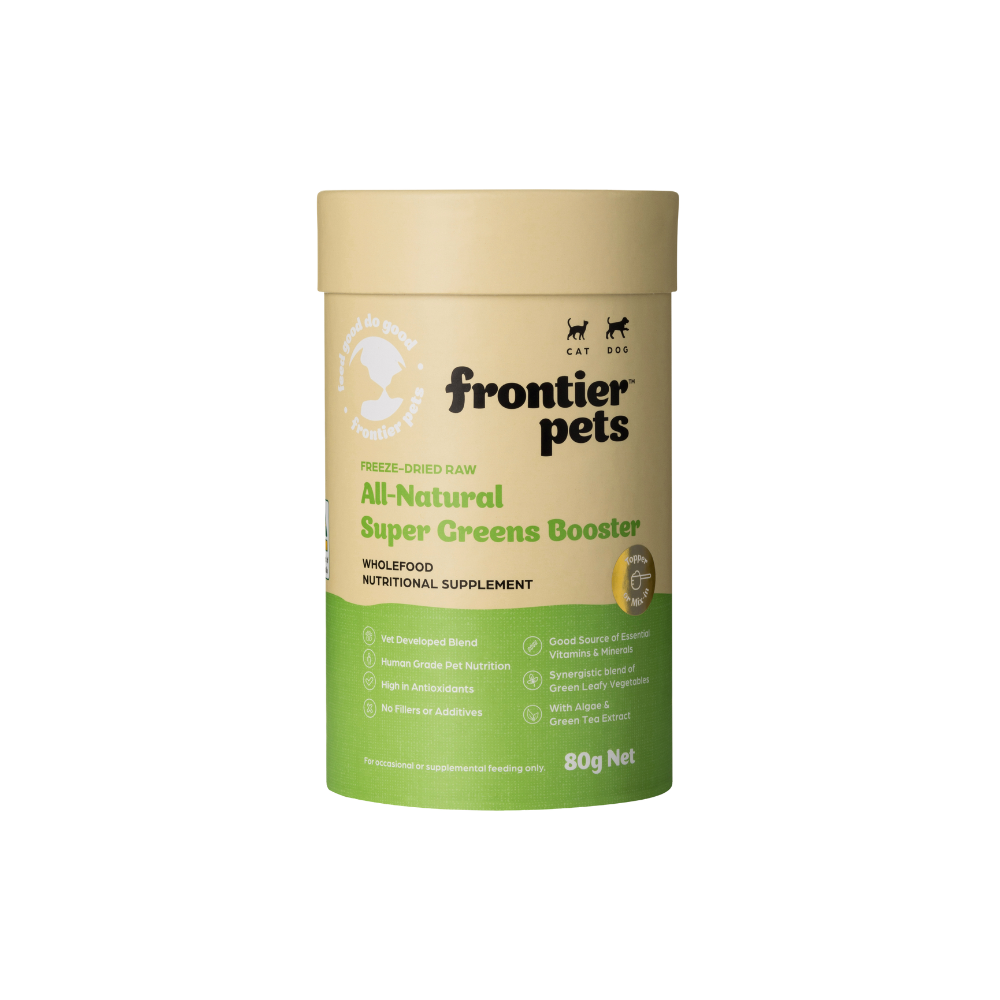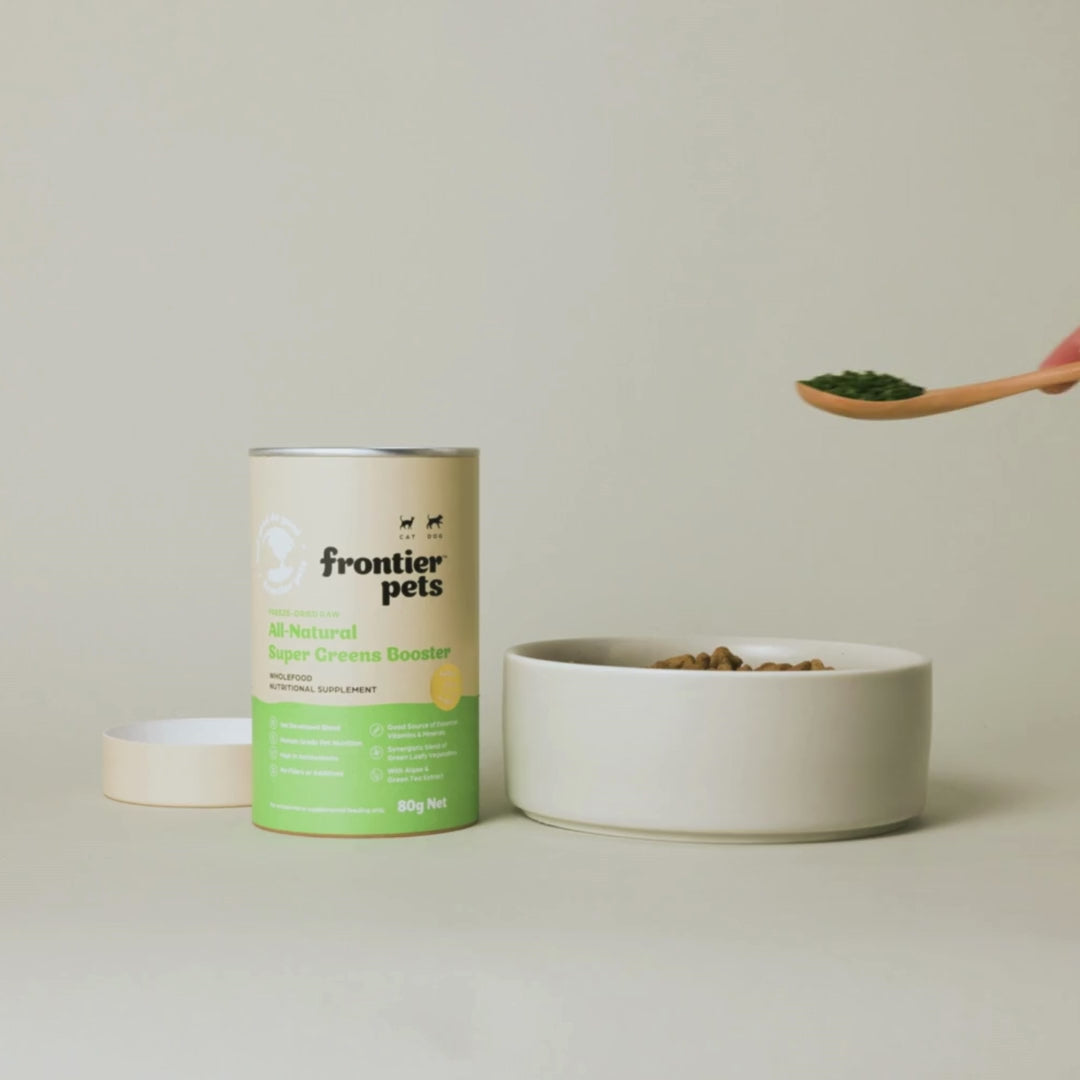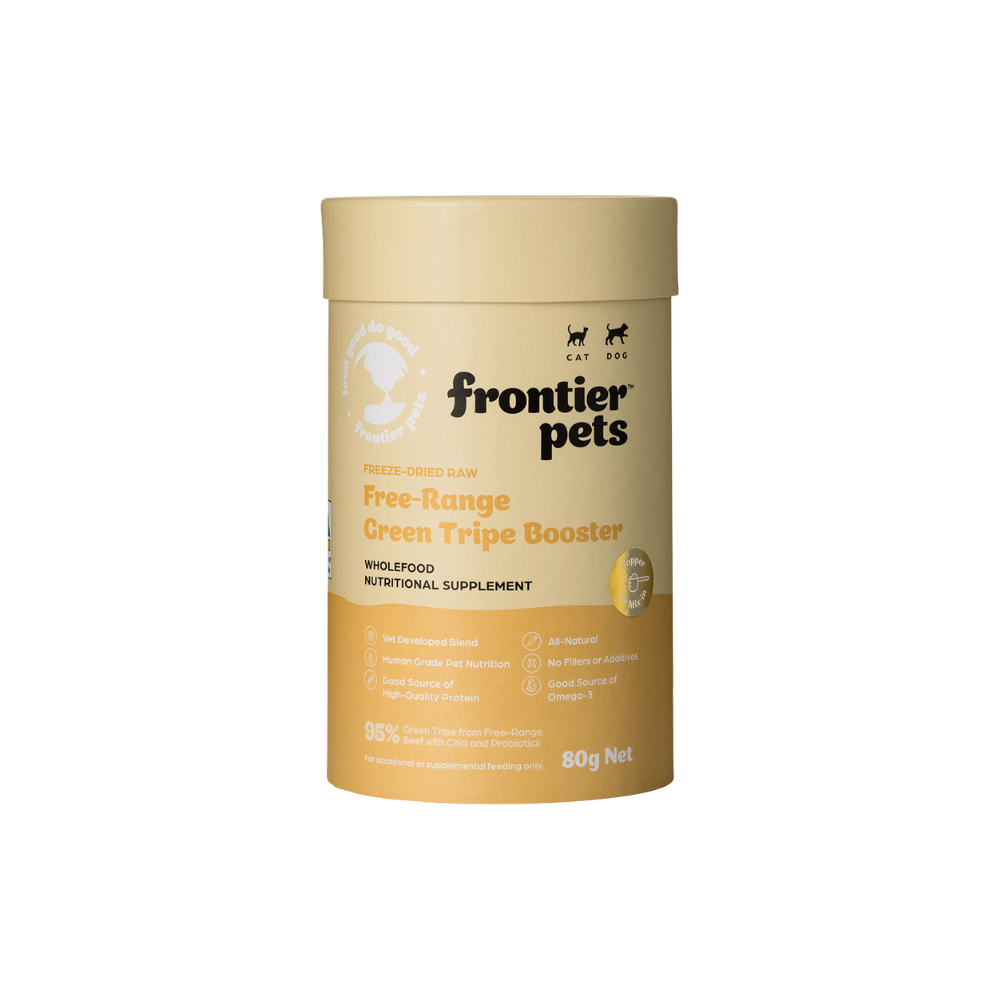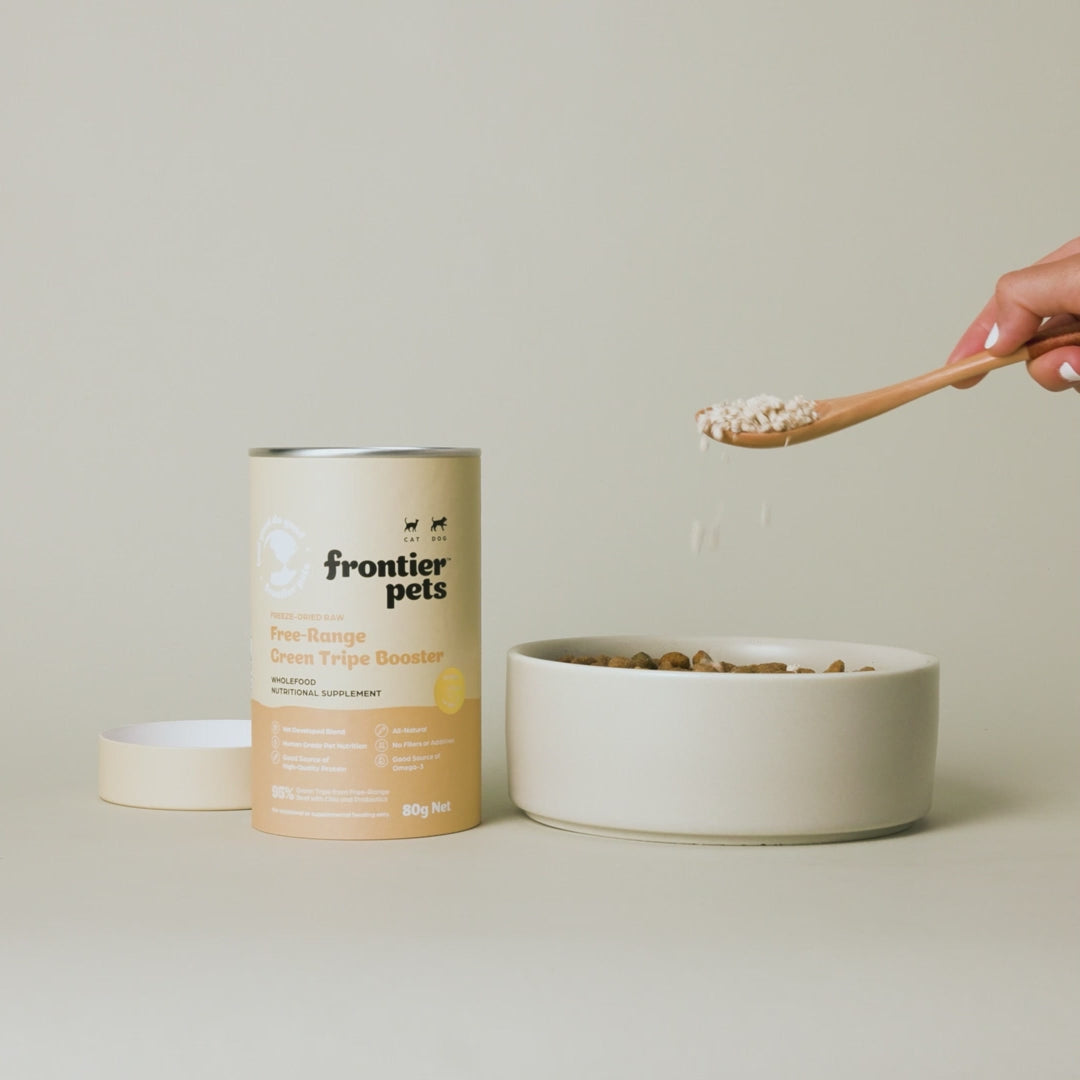Good food comes from the source
Food is the essential foundation for a long life of good health - both for ourselves and for the companion animals in our care. There is so much apparently conflicting information out there about what to feed our pets, that it can be very confusing. Let's look at the facts:

Dogs (and cats) are omnivores: that means they were designed to eat both meat and vegetable matter. They are not solely carnivorous, as is sometimes implied.
The types of meat they would have eaten would have been small prey species, animals small enough for them to catch and eat. This would have included things like fish, rabbits, chickens, mice, and other small to medium rodents and mammals.
The meat would have been raw and would have included not just muscle, but the entire carcass, including the bones, internal organs, skin, brain and gut contents, which would have been full of ground vegetable matter.
Ancestral dogs and cats would have eaten very little in the way of cereal grains.
Dogs flourished when they lived in conjunction with human civilizations, living on the scraps and handouts of their human companions. They would also forage a variety of foodstuffs from the environment. This would have included lots of raw, even rotting fruits and vegetables, some roots and soil, and perhaps some milk and eggs. The natural, original diet would have included little, if any cooked food, especially grains.
Modern Pet Food
The modern pet food industry as we know it, began in the 1930’s and rapidly gained popularity.
It catered for the need of people who are too busy, or lacked the right amount of nutritional knowledge to hand-prepare their dogs meals. We understood that store bought food was good – in fact, the best.
The sad reality is that a lot of the time this is simply not true.
There is mounting evidence and a growing belief that a lot of modern pet foods, even some so called “premium foods” are not health promoting for animals and in fact that a lot of the diseases afflicting pets today are related to the poor quality of much of the commercial food being fed.
This is due to a number of factors:
Additives: Adding a vitamin in at the end of the manufacturing process is not the same as the animal getting that vitamin in its natural form from fresh food.
Grains: Dogs don’t digest grains well and yet it is the main ingredient in most commercial foods.
Preservatives: Ethoxyquin, BHT and BHA are often added to commercial foods and are chemicals that are toxic to the amimal, loading the kidneys and liver.
Palatability: Manufacturers will often add artificial flavours, salts and fats to food to get your dog hooked. They’ll also colour it so you think it looks good.
So what's good?
- Use high quality ingredients – seasonal if possible.
- Use foods that are free of all chemicals and hormones - including those from the original protein source.
- Use fresh, minimally processed food.
- The food should contain less than 10% grains.
What matters most for health is the quality of the diet. Consider paying more for a true premium food that uses whole, fresh (seasonal) foods that are free from nasty additives, and which retain the natural vitality and freshness of the food through top quality processing and packaging.
In general, the best ingredients are those which approximate the wild, ancestral diet and that make sense to you.

